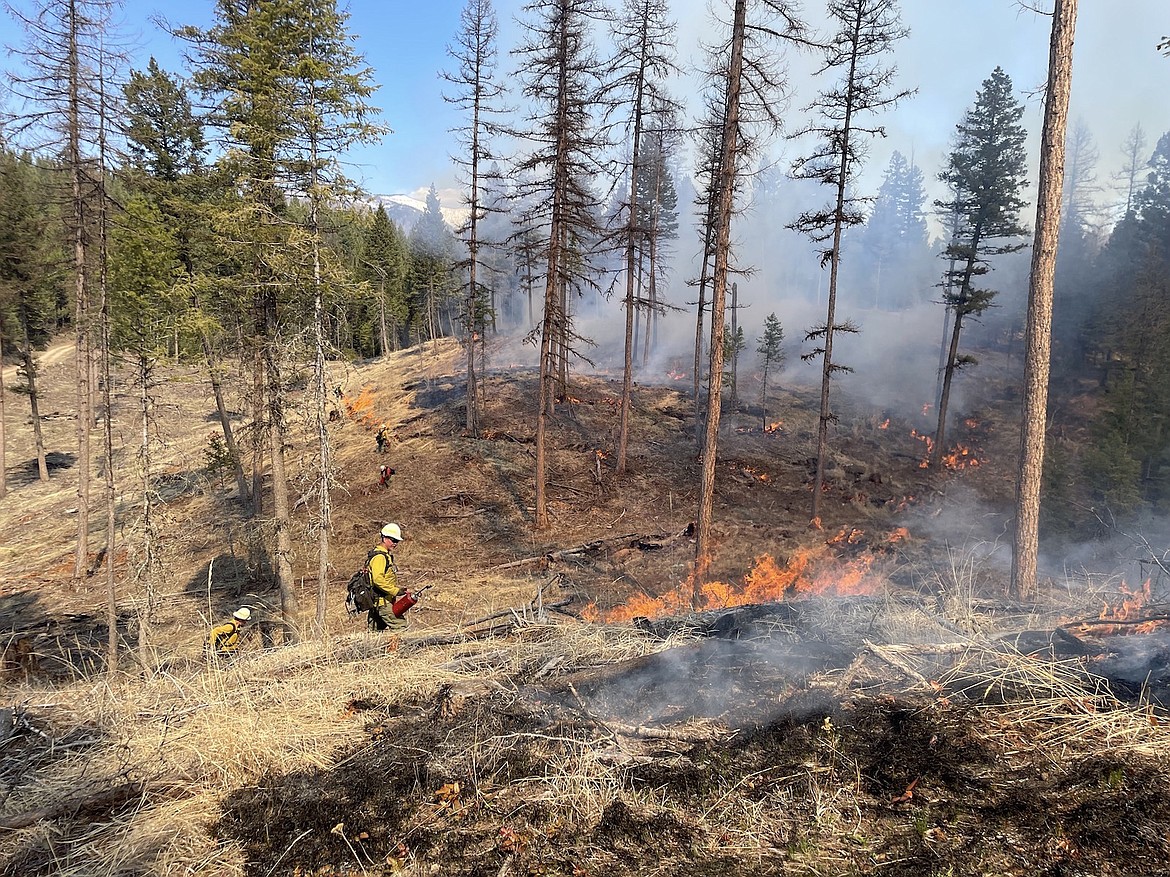Climate changing: Research shows times for ‘prescribed burns’ in the West shifting
Deciding when and where to conduct prescribed burns is becoming increasingly important as the climate warms, and, according to a recent study, the timing and frequency of appropriate weather will also play a larger role.
Prescribed burns are an essential tool land managers use in reducing fuel availability for extreme wildfires.
According to a study published in October 2023 in Communications Earth & Environment, conditions favorable to prescribed burns will become far less frequent in much of the West, especially the Southwest. However, the study found that parts of the northern Rocky Mountains will have more days to use prescribed burns, especially during the early and late winter months.
“One of the reasons why some of the northern tiers of the U.S. become more favorable for prescribed fire at times in winter is actually because it gets warmer,” said Daniel Swain, lead author and climate scientist for the University of California, Los Angeles. “You’re actually warming into this acceptable envelope from being on the low end.”
Though the study forecasts an overall decrease of days acceptable for prescribed fire — as much as a 25% to 31% during the spring and summer months across the West — northern regions may see an increase in potential burn days during the winter. These opportunities are a silver lining of sorts, as any opportunities to burn forests with low-intensity fire are essential for keeping fuels off the forest floor and leaving larger trees unharmed, Swain said.
“You can’t just broad brush the American West,” Swain said.
Prescribed burns reduce wildfire risk but in many places the ecosystem benefits from these fires, which are often less intense than wildfires spurred by climate change and years of fire suppression, Swain said.
Mariah Leuschen-Longeran, the public affairs specialist for the Forest Service’s northern region, said that fire professionals and firefighters make comprehensive plans about where to burn, and they look for optimal weather conditions. One thing they pay close attention to is air quality.
The Forest Service works with local partners, such as the county or state, making them aware of the upcoming fire, she said. Additionally, communication with the National Weather Service plays a big part in the days and weeks leading up to a potential window. Burns require pre-planning that fits local outlines, goals and objectives, but ideally, they also align with larger projects’ goals, Leuschen-Longeran said.
In the future, climate conditions could align for prescribed burns earlier in the year, depending on the snowpack, Leuschen-Longeran said. Opportunities may arise in the winter, especially on open slopes facing south — where direct sunlight hits. However, she said the agency follows air quality guidelines set by the Montana Department of Environmental Quality.
In the winter, accommodating prescribed burns produces its own challenges. And in western Montana, it’s common for a stagnant, low atmosphere to form, which would trap smoke, said Liz Ulrich, the planning supervisor at the DEQ’s Air Quality Bureau.
The DEQ views small burns on private land very differently than the large-scale burns typically undertaken by government agencies. Ulrich said Montana has different regulations for the West than the East to accommodate regional differences that may impact air quality.
In addition, for an entity like the Forest Service, the Montana, Idaho Airshed Database tracks potential burns. Even though forest conditions in Montana may align for prescribed burns, that doesn’t mean there will be an opportunity to conduct one since the state takes turns using weather windows in coordination with Idaho, Ulrich said. Working with Idaho is imperative because when they burn, the region’s dominant wind patterns often bring smoke further into Montana, Ulrich said.
The DEQ’s goal is to maintain a healthy airshed and to help mitigate wildfire danger, but the balance is becoming increasingly harder to find as wildfire season grows, she said. The agency is always looking for opportunities to approve burns, but they have had to adjust. When the fire season goes longer than usual, that can mean not approving burns, she said.

